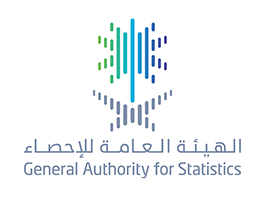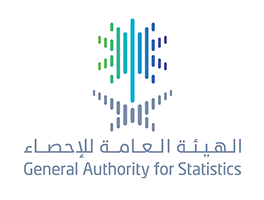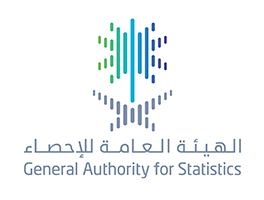
GASTAT: Unemployment rate in the Kingdom drops to 4.4% in Q4 2023
28-03-2024
The General Authority for Statistics (GASTAT) issued today the Labor Market Publication for Q4 of 2023. According to the results of this publication, the total unemployment rate (for Saudis and non-Saudis) decreased to 4.4% from Q3, 2023 by 0.7 percentage points, where it was 5.1%. The unemployment rate for Saudis also decreased to 7.7% in Q4 of 2023 compared to 8.6% in Q3, 2023. Additionally, the unemployment rate for Saudi females during Q4 of 2023 decreased to 13.7% compared to 16.3% in the previous quarter, while the unemployment rate for Saudi males remained stable at 4.6% in Q4 of 2023.
During the fourth quarter of 2023, the labor force indicators showed a decline in the total participation rate in labor force (for Saudis and non-Saudis) compared to Q3, 2023, reaching 60.4%. Moreover, the participation rate in labor force for Saudis dropped to 51.3%, compared to the previous quarter.
The results of the Labor Market Publication also indicated a decrease in the participation rate in labor force for Saudi females during Q4 of 2023, with 35.5% compared to the previous quarter. However, the participation rate in labor force for Saudi males in Q4 of 2023 decreased to 66.6% compared to 66.8% in the previous quarter.
It is worth mentioning that the Labor Market Publication bases its results on a household survey conducted by GASTAT falling under the social statistics. Data is collected through a representative sample of population from various administrative regions in the Kingdom of Saudi Arabia, by completing an electronic questionnaire containing several questions. This process provides estimates and indicators related to the labor force of population in the working age group (15 years and above) residing in the Kingdom of Saudi Arabia, estimating the population (inside and outside the labor force), and calculating key labor market indicators such as the unemployment rate, labor force participation rate, and others.

GASTAT participates in the meeting of the Permanent Technical Committee for Statistics
10-03-2024
The Permanent Technical Committee for Statistics of the Arab League held its forty-ninth meeting in Cairo on September 26-27 of this year at the headquarters of the General Secretariat of the Arab League. The meeting was attended by delegations representing official Arab statistical agencies, as well as a number of specialized Arab organizations in the field of statistics. The delegation of Saudi Arabia was led by Dr. Fahad bin Abdullah Al-Dossari, President of the General Authority for Statistics.
During the sessions, various technical and administrative topics were discussed, including monitoring the implementation of recommendations from the previous committee meeting, highlighting statistical activities carried out by Arab official statistical agencies in the past period, as well as reports and recommendations from subcommittees.
It is worth mentioning that the Permanent Technical Committee for Statistics aims to enhance Arab statistical capabilities, exchange experiences, information, and technical advice among member countries, and provide the necessary statistical data and indicators to serve the common Arab statistical work.

GASTAT and Family Affairs Council sign Memorandum of Cooperation
10-03-2024
The General Authority for Statistics and the Family Affairs Council signed a memorandum of cooperation yesterday, Monday September 4, 2023. The memorandum aims to enhance integration between the two entities in their respective fields of expertise, establish a general framework for joint activities and tasks, and develop their institutional capacities to serve common interests and goals. The memorandum was signed at the headquarters of the Family Affairs Council in Riyadh. Dr. Fahad Al-Dossari, President of the General Authority for Statistics, signed on behalf of the authority, while Dr. Maimouna bint Khalil Al-Khalil, Secretary-General of the Family Affairs Council, signed on behalf of the council.
The memorandum highlights the exchange of information and data between the two parties - each according to its expertise - in areas of mutual interest, cooperation in issuing statistical publications related to families, exchanging support and technical and knowledge expertise in areas of mutual interest, as well as exchanging advice in the areas of expertise of each party. This includes exchanging research and studies, publications, and making it possible for the staff of both parties to participate in training courses, seminars, scientific conferences, and workshops related to the areas of mutual cooperation agreed upon.

GASTAT adopts chain-linked methodology in calculating real GDP of the Kingdom
10-03-2024
Based on its role in developing the statistical sector, the General Authority for Statistics adopted the chain-linked methodology in the national accounts to calculate the real GDP. The publication of Q4, 2023 and the annual publication of the same year will be published using the new methodology instead of the previous methodology that was based on utilizing the fixed base year.
Saudi Arabia is the first country in the Gulf and Arab regions and among the first G20 countries that implement the chain-linked methodology. This dynamic methodology is thought to be a useful tool for estimating the real growth rates of national accounts and for measuring economic growth rates using weights and prices from the prior year as a benchmark to provide measurements within adjacent time periods. It accurately reflects the current economic conditions of any country that employs it.
Expert statisticians in the field of national accounts have pointed out that the chain-linked methodology takes into account the impact of price changes, flexibility in dealing with economic activities along with their continuous updating and accurately reflects economic changes. It also considers production structure and consumption patterns, allowing for clearer international comparisons. International statistical organizations and bodies concerned with national accounts systems urge countries worldwide to adopt the chain-linked methodology instead of the previous methodology that used a fixed base year for weights and prices, in order to accurately reflect real growth at the national level and monitor developments and achievements effectively.
It is worth mentioning that the Gross Domestic Product publication is one of the releases issued by the General Authority for Statistics on a quarterly and annual basis to provide estimates of the GDP for the relevant period, expenditure components, measure the contribution of economic activities and various regulatory sectors, as well as provide modern annual economic indicators such as GDP growth rates, relative contributions of economic activities, and regulatory sectors to the GDP according to the latest international systems. It also includes many analytical tables highlighting the tracks of the national economy.
National accounts publications also contribute to meeting the requirements of the Kingdom Vision 2030, regional requirements to understand the national economy, including the statistical center of the Gulf Cooperation Council, the Arab Monetary Fund, the League of Arab States, in addition to international requirements such as those of the World Bank, the International Monetary Fund, the Organization for Economic Cooperation and Development, and others. The General Authority for Statistics website provides more details about its statistical products.
